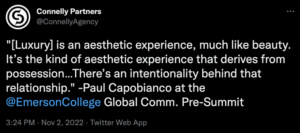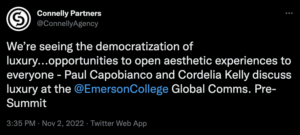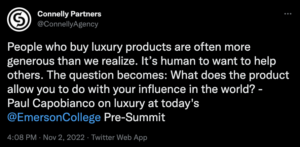December 22, 2022 / Thought Leadership
Top Data & Analytics Trends to Watch in 2023
The CP Data & Analytics Team
Procrastinators Play Catch Up on Google Analytics 4 (GA4)
It’s impossible to talk about data and analytics in 2023 without acknowledging the official sunsetting of Universal Analytics (UA) on July 1, 2023, a date set by Google back in early 2021 after the release of GA4. As of mid-year, there is no more sitting on the fence – GA4 will be the only option for Google Analytics. And while many organizations have prepared for this moment, there will undoubtedly be ample last minute scrambling among the stragglers who have failed to adequately plan for the UA to GA4 transition.
Cookieless Future Fuels Innovation
While Google has officially delayed the depreciation of third-party cookies in Chrome until the second half of 2024, the inevitability of a cookieless future will stoke innovation during 2023 as organizations search for new tracking and measurement solutions that are not dependent upon cookie-based identifiers. Google’s decision to delay is, in part, allowing them to further test their Privacy Sandbox solutions that are scheduled to be made generally available in Q3 2023. On parallel paths, however, there are a plethora of organizations racing to develop their own proprietary solutions ranging from clean rooms to universal IDs, from digital fingerprinting to ID graphs.
Acceleration Toward First-Party Data
In light of cookie depreciation, the trend toward more actively collecting, integrating, and leveraging first-party customer data will accelerate in 2023. And while some organizations have never lost sight of the value of first-party data, many others will have to jump-start their efforts by first navigating a shift toward first-party, data-based customer strategies. On a parallel path, they will have to contend with the tactical and operational realities of the underlying technical and analytical investments that will be required to support the transformation of data to insights in order to generate a positive return.
Data Visualization Shifts From Being Production-Focused to Consumption-Focused
Where data exists, it can always be turned into colorful charts, graphs, and diagrams. That makes it visually interesting. To be sure, the many tools and platforms used in this space are arming analysts with an endless stream of new options for producing visualizations that are more dynamic, mobile-friendly, shareable, etc. But the real shift in 2023 will be toward making visualizations more user-centered and story-based as meaning is increasingly prioritized over metrics.
Evolving Consumer Privacy Landscape
GDPR-type regulations are fast coming to the United States. California passed the California Consumer Privacy Act (CCPA) back in 2018, but has new regulations, as part of California Privacy Rights Act (CPRA), going into effect on January 1, 2023. Because of the large number of consumers represented in CA, the California legislation tends to get a disproportionate amount of attention, but it’s worth noting that a number of other states have passed similar consumer privacy laws in the past couple of years and we expect 2023 to see the rollout of new state-level laws that are currently at various stages of legislative consideration. See IAPP tracker here.
Exponential Data Growth Increases the Need for Data Security
With the average cost of a data breach during 2022 totalling nearly $10M (Statista, IBM), organizations are going to be pushed to make more significant investments in the security of their exponentially growing volumes of data. As organizations work to secure their environments with firewalls, IP protocols, etc., one of the best countermeasures to a security breach is to build awareness across an organization’s workforce and provide training for identifying potential cyber security threats. In 2023, we expect to see this kind of training increasingly prioritized.
 brief us?
brief us?











 This year’s Warrior-themed annual Ad Club Women’s Leadership Forum came at a pivotal moment, a time where many feel as though instead of taking strides forward, women’s equality has shifted into reverse over the past year. It was an uplifting day of female empowerment, an opportunity to learn and seek inspiration from an impressive range of standout women alongside fellow colleagues and clients I respect and admire.
This year’s Warrior-themed annual Ad Club Women’s Leadership Forum came at a pivotal moment, a time where many feel as though instead of taking strides forward, women’s equality has shifted into reverse over the past year. It was an uplifting day of female empowerment, an opportunity to learn and seek inspiration from an impressive range of standout women alongside fellow colleagues and clients I respect and admire. 

 The communications revolution has created a world where customer service is more important than ever. Whereas companies in the past could impose their systems, their language and their rules on the general public, the expectation now is that the customer is front and center in everything and it is the job of the seller to meet the client where they are, not the other way around.
The communications revolution has created a world where customer service is more important than ever. Whereas companies in the past could impose their systems, their language and their rules on the general public, the expectation now is that the customer is front and center in everything and it is the job of the seller to meet the client where they are, not the other way around.